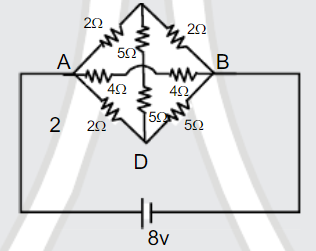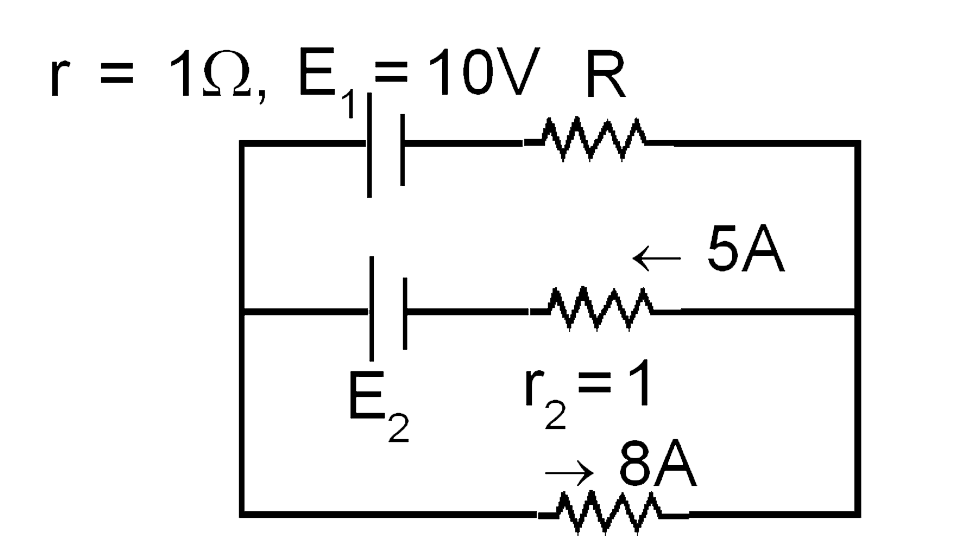Statement−I: The resistance of a coil for direct current is 5 ohm. An alternating current is sent through it. The resistance will remain same.
Statement−II: The resistance of a coil does not depend upon nature of current.
If both Statement- I and Statement- II are true, and Statement - II is the correct explanation of Statement– I.
If both Statement - I and Statement-II are true but Statement - II is not the correct explanation of Statement – I.
If Statement-I is true but Statement-II is false.
If Statement-I is false but Statement-II is true.
The correct Answer is:A
To solve the question, we need to analyze both statements provided and determine their validity.
Step 1: Analyze Statement-I
Statement-I: The resistance of a coil for direct current is 5 ohm. An alternating current is sent through it. The resistance will remain the same.
- When a direct current (DC) flows through the coil, it has a resistance of 5 ohms. This resistance is a property of the material of the coil and does not change with the type of current flowing through it.
- When alternating current (AC) is applied, the coil behaves like an inductor, and while the inductive reactance (XL) will come into play, the resistance (R) of the coil remains unchanged at 5 ohms.
Step 2: Analyze Statement-II
Statement-II: The resistance of a coil does not depend upon the nature of current.
- This statement is also true. The resistance of a conductor is determined by its material, length, and cross-sectional area. It does not depend on whether the current is AC or DC. Therefore, the resistance remains the same regardless of the type of current.
Step 3: Conclusion
Both statements are true. Additionally, Statement-II provides a correct explanation for Statement-I. Therefore, the correct answer is that both statements are true, and Statement-II is a correct explanation of Statement-I.
Final Answer
Both Statement-I and Statement-II are true, and Statement-II is the correct explanation of Statement-I.
---
Statement-I: The resistance of a coil for direct current is 5 ohm. An alternating current is sent through it. The resistance will remain the same.
- When alternating current (AC) is applied, the coil behaves like an inductor, and while the inductive reactance (XL) will come into play, the resistance (R) of the coil remains unchanged at 5 ohms.
Statement-II: The resistance of a coil does not depend upon the nature of current.
Both statements are true. Additionally, Statement-II provides a correct explanation for Statement-I. Therefore, the correct answer is that both statements are true, and Statement-II is a correct explanation of Statement-I.
Both Statement-I and Statement-II are true, and Statement-II is the correct explanation of Statement-I.
Similar Questions
Knowledge Check
The resistance of a coil for direct current is 10 ohm. When a.c. is sent through the same coil, its resistance would be
A10ΩB>10ohmC<10ohmDcannot sayFind current through 4ohm resistance
 A1AmpB2AmpC3AmpD4Amp
A1AmpB2AmpC3AmpD4AmpThe resistance of a current carrying wire depends on
Athe area of cross-section of the conducting wire.Bthe length of conducting wire.Cthe material of the wire.DAll the above capacitor
The shunt required for 10% of main current to be sent through the moving coil galvanometer of resistance 99Ω will be-
View SolutionHow does the heat H produced by a current passing through a fixed resistance wire depend on the magnitude of current I?
View SolutionIn fig the current through resistance (R) is

View SolutionA solenoid is at potential difference 60 V and current flows through it is 15 ampere , then the resistance of coil will be
View SolutionA direct current of 2 A and an alternating current having a maximum value of 2 A flow through two identical resistances. The ratio of heat produced in the two resistances will be
View Solution
